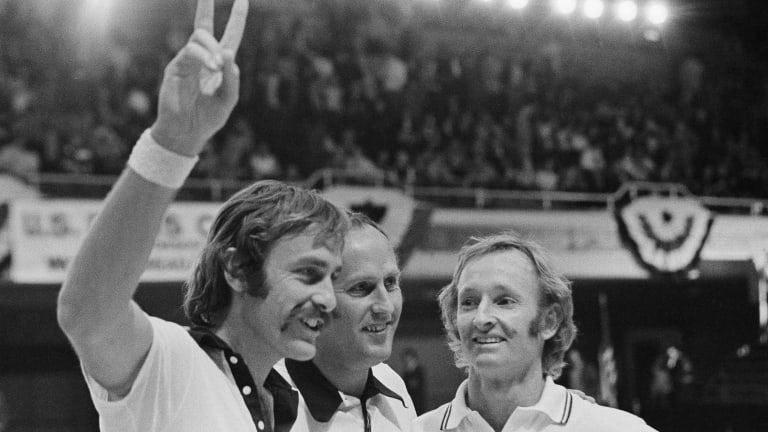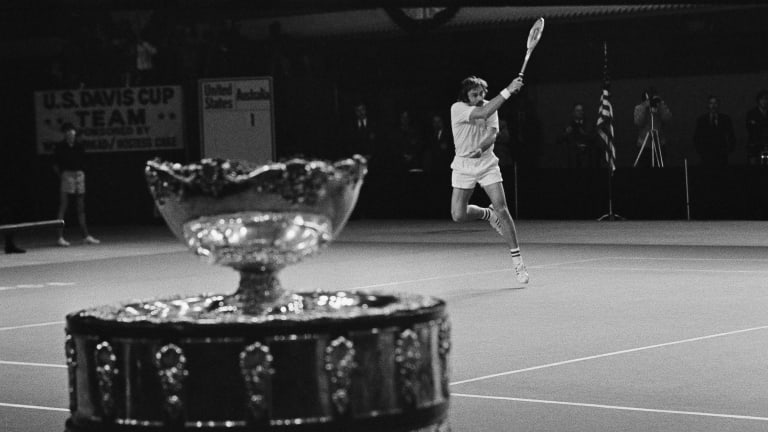For Australian tennis players, two attributes have always held supreme power: loyalty and fitness. On this day in 1973, both revealed themselves eloquently.
It was Friday, November 30, the start of the Davis Cup final, Australia versus the United States at the Public Auditorium in Cleveland. The U.S. team had won the Cup for five straight years, commencing its run with a victory over the Aussies in 1968.
But there was a mitigating factor. When tennis became an Open sport in ’68, political in-fighting exploded. Previously, there had been a simple split between amateurs and professionals. Open tennis triggered the creation of additional classifications, including a mirky distinction between registered players and contract pros. Each earned money, but while the former maintained an official loyalty of sorts to their national associations, the latter were far more independent, including signing contracts with promoters. Alas, as was the case prior to Open tennis, contract pros were barred from competing Davis Cup.
The impact on Australia tennis was disastrous. Just about every one of its contemporary greats—Rod Laver, Ken Rosewall, John Newcombe, Tony Roche, Roy Emerson, Fred Stolle—was unable to compete in an event Australians had long regarded as the sport’s Holy Grail. After having won the Davis Cup 15 times between 1950 and ’67, Australia lost that ’68 final and over the next four years never even got that far.
Then came a shift in tennis politics. Contract pros were at last allowed to play Davis Cup. This was a boon for Australia. For the final, it trotted out a team of legends—Newcombe, Laver, Rosewall. Newcombe had just won the US Open. The 35-year-old Laver and 38-year-old Rosewall each remained razor-sharp.
This was the first time the Davis Cup final was played indoors, the opening day’s matches featuring Newcombe versus Stan Smith, Laver against Tom Gorman. As Laver wrote in his 2019 book, The Golden Era, “While snow, rain and strong winds battered the building, 4000 fans packed in the first day, 30 November, to see their men send the old Aussies back to their aged care home.”

